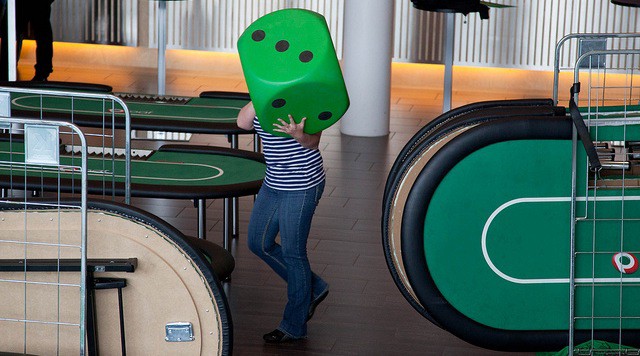The Math Behind Our Gambling

I have a slight aversion to gambling for a number of reasons, but I will say that one of those reasons is that I was named after a certain family friend who lost everything he had because he had a gambling problem, and I’d like to avoid going through the same thing.
But here are two things on gambling that I found absolutely fascinating:
• A recent This American Life episode where Ira Glass and producer Robyn Semien learn how to count cards from Andy Bloch, a professional poker player who was part of the MIT Blackjack Team. Glass and Semien then go to an unidentified casino to try out their skills. The episode also has a fascinating segment about a Christian card counting team, and a story about a woman who sued a casino.
• A story in Johns Hopkins Magazine about a 44-year-old engineering professor who is studying the math behind the poker game Texas Hold ’em: “The math in poker is basic arithmetic, it’s not that hard. But you still have people, like a lot of the doctors that I play with, who’d rather not bother with all the math. They feel that they have enough intuition for the game.” Rubin is pleased to point out that they’re frequently wrong. “The fundamental math is much more important. If you’re a solid mathematical player, in the long run you’re going to kill the intuitive player.”
Photo credit: Rob Watkins/Paf
Support The Billfold
The Billfold continues to exist thanks to support from our readers. Help us continue to do our work by making a monthly pledge on Patreon or a one-time-only contribution through PayPal.
Comments